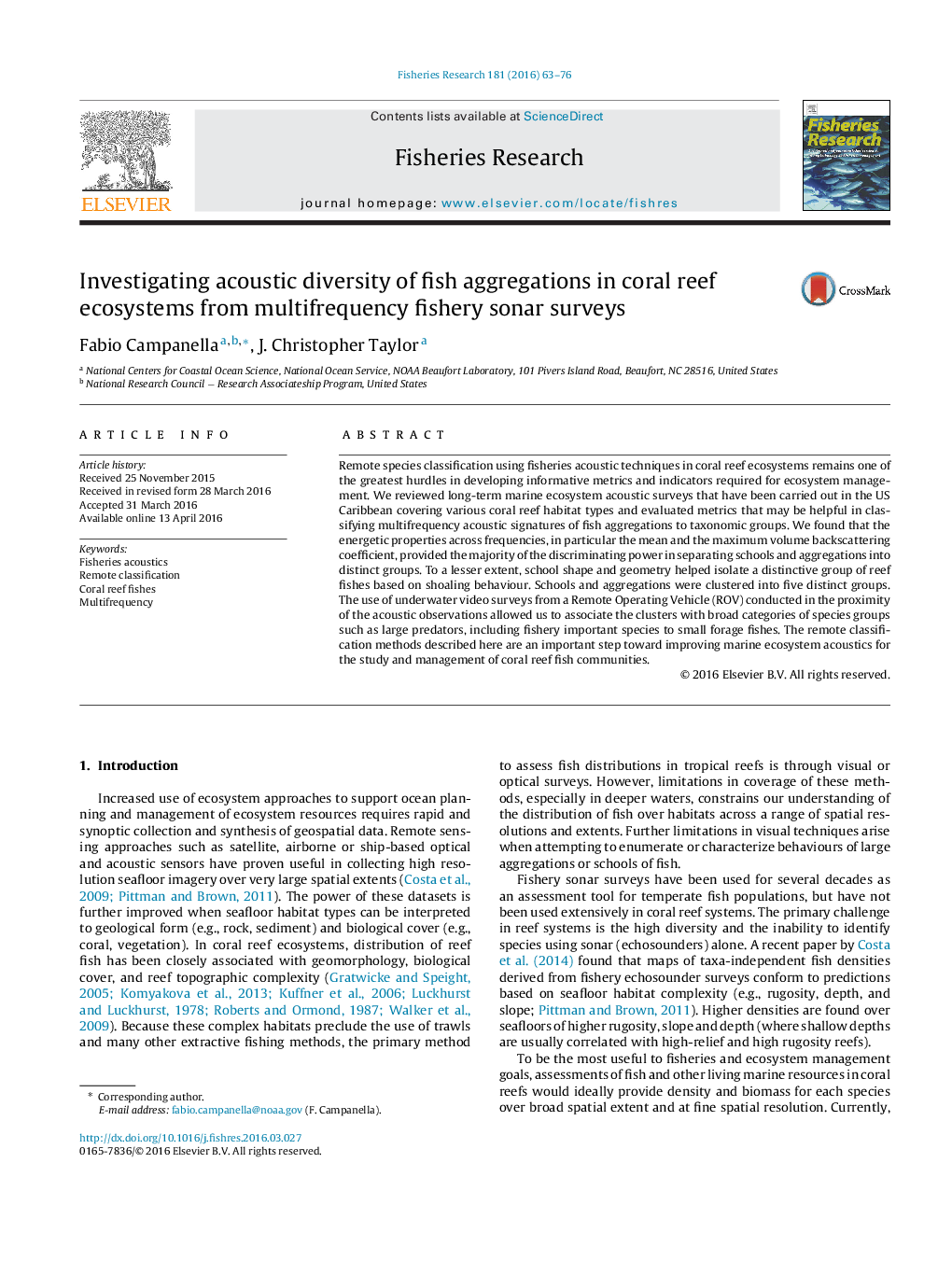| Article ID | Journal | Published Year | Pages | File Type |
|---|---|---|---|---|
| 4542688 | Fisheries Research | 2016 | 14 Pages |
•Coral reef fish aggregations were investigated using multifrequency fishery acoustics and remotely operated vehicle (ROV).•Unsupervised clustering was used to describe the acoustic diversity and categorize the multifrequency acoustic signatures.•Five school types were obtained based on energetics and morphometric differences.•The approach allows separation into broad categories of species such as functional groups and fishery-important species.•These results highlight an improvement in interpretation of fishery acoustic surveys in coral reef ecosystems.
Remote species classification using fisheries acoustic techniques in coral reef ecosystems remains one of the greatest hurdles in developing informative metrics and indicators required for ecosystem management. We reviewed long-term marine ecosystem acoustic surveys that have been carried out in the US Caribbean covering various coral reef habitat types and evaluated metrics that may be helpful in classifying multifrequency acoustic signatures of fish aggregations to taxonomic groups. We found that the energetic properties across frequencies, in particular the mean and the maximum volume backscattering coefficient, provided the majority of the discriminating power in separating schools and aggregations into distinct groups. To a lesser extent, school shape and geometry helped isolate a distinctive group of reef fishes based on shoaling behaviour. Schools and aggregations were clustered into five distinct groups. The use of underwater video surveys from a Remote Operating Vehicle (ROV) conducted in the proximity of the acoustic observations allowed us to associate the clusters with broad categories of species groups such as large predators, including fishery important species to small forage fishes. The remote classification methods described here are an important step toward improving marine ecosystem acoustics for the study and management of coral reef fish communities.
